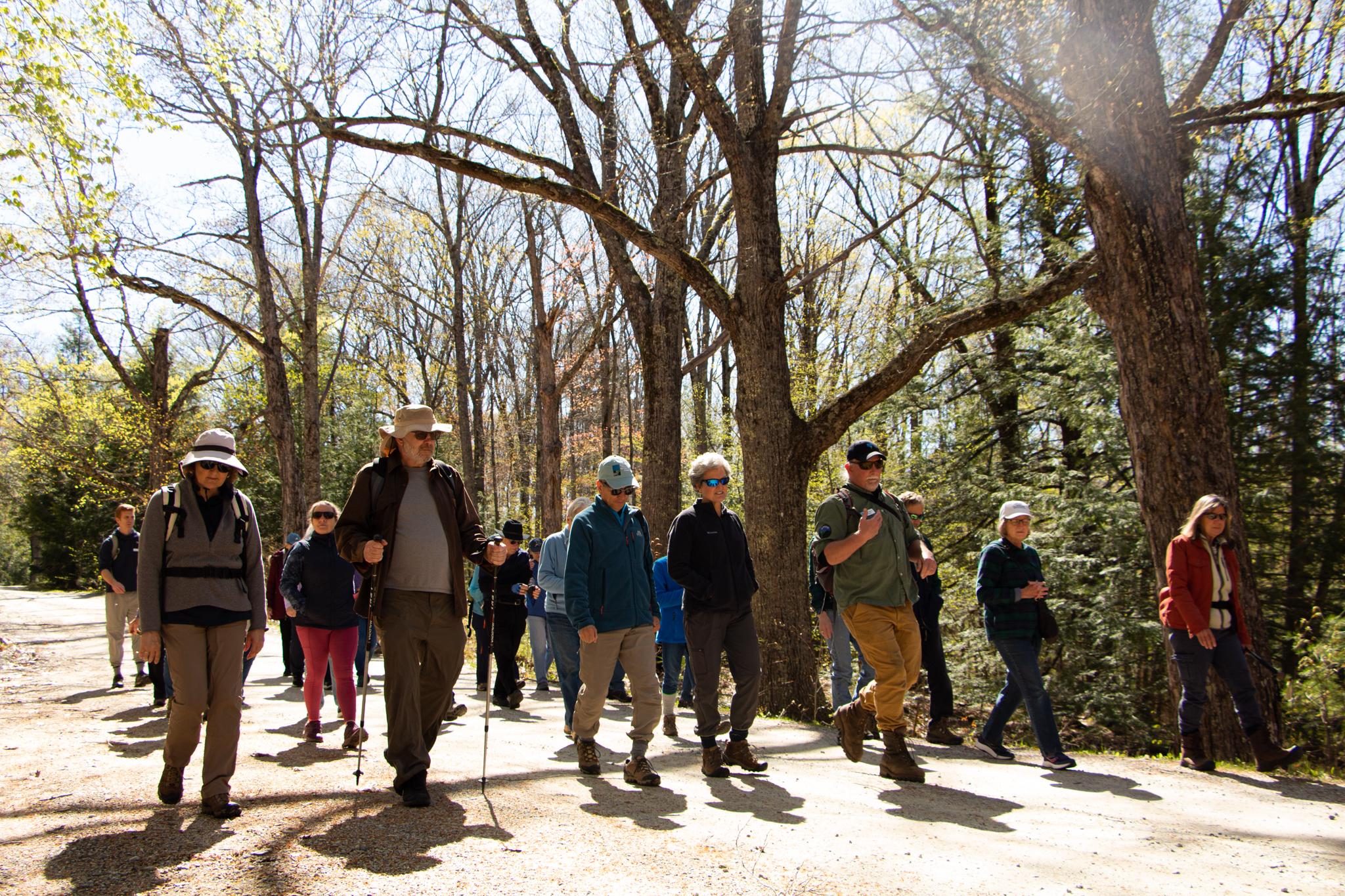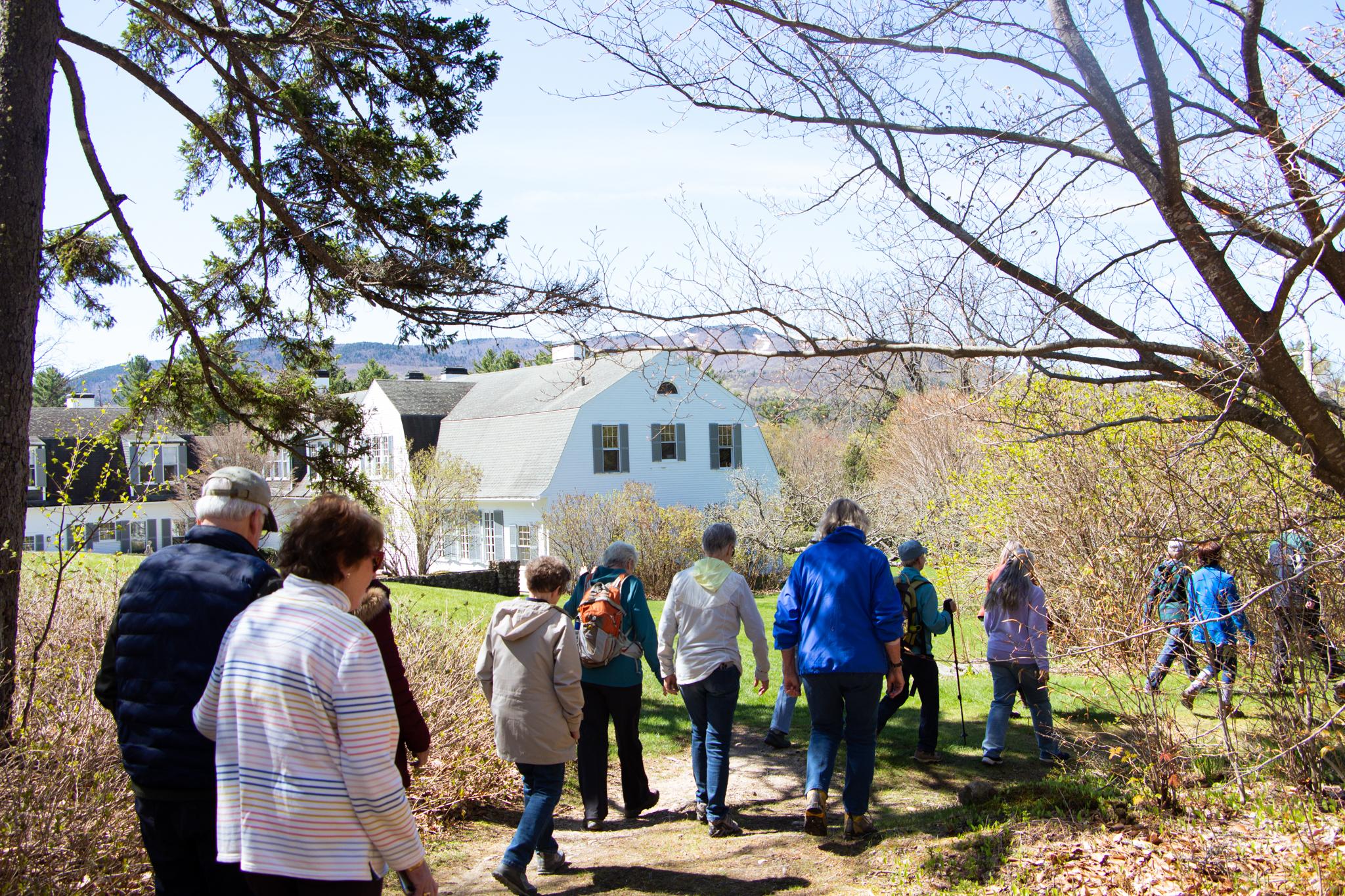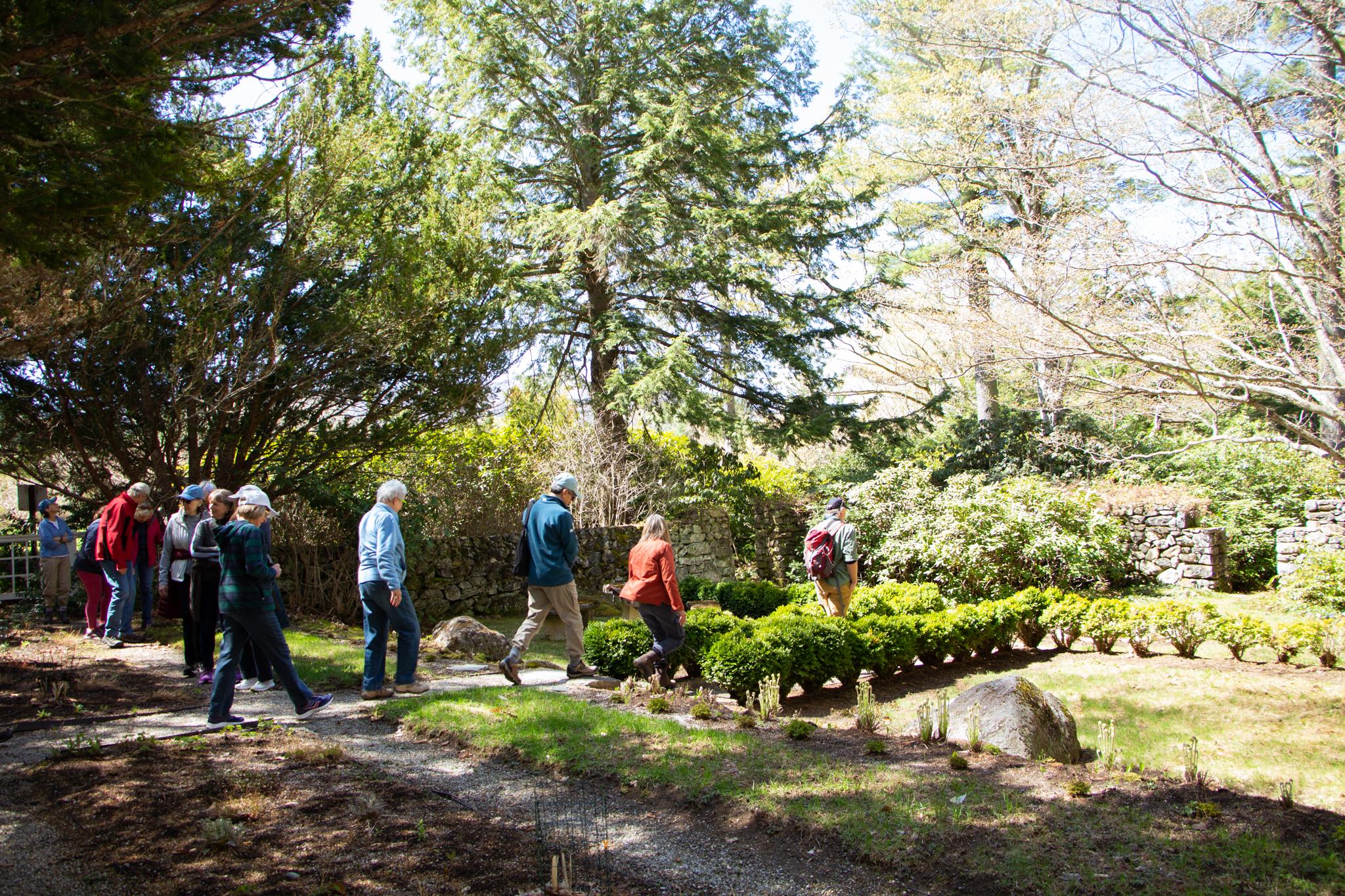- Tags:
- Education

The car thermometer is just cresting 71 degrees as we pull into the parking lot of the gatehouse at the John Hay Estate at the Fells on Sunday, May 6. It’s the first weekend in May, and the rain has finally dissipated making way for a dappled morning that smells of magnolia blossoms, hot earth and new leaves.

A crowd has gathered in the dusty lot. Today is the first installation of a series of annual programs presented by The Fells in partnership with the Forest Society, led by Dave Anderson of the Forest Society. Titled “Hidden Histories of The Fells,” this walk-and-talk style hike, co-sponsered by The Fells nonprofit, is set to tour the property while pointing out points of natural and historical interest. Here at The Fells, there are plenty of both.
Before he worked out of his office in the Weeks Wing at the Conservation Center in Concord, Anderson worked in the gatehouse at The Fells, as the education entity representing the Forest Society. Together, the John Hay Estate at The Fells and the Forest Society created a series of educational talks, tours and readings that deepened the public’s understanding of the estate’s historical and ecological significance. Just like today’s event.
We’re a group of 29 nature enthusiasts and history buffs alike, equipped with hiking poles, sun hats, plenty of bug spray and our best naturalist brains, ready to take on the hidden histories and ecologies of the grounds at The Fells.
We begin by meandering down the gravel driveway, passing by towering oak and maple trees and stopping occasionally so that Anderson can point out the difference in the bud coloring on each species of maple.

We imagine what the landscape would look like as a rolling field, a farmer’s paradise until they dig into the soil and discover the ragged boulders waiting for them beneath the surface.
We then try to imagine how this dreamy property could’ve ever been considered worthless, even though Anderson describes in detail just how that was possible — when the farmers learned of the profitable, rich soils of the Midwest, they packed up and left the Northeast farmlands barren in search of better living.
The driveway passes through a cluster of rhododendrons to the main house which stands, backlit by Mount Sunapee, in a green lawn lined by yew hedges and peony bushes that have just begun their foray into spring growth.
The house itself is a stately structure, just the kind you would expect to house the family lineage of an American diplomat. A gambrel roof juts over windows framed by forest green shutters and a stately porch supported by columns looks out onto the sprawling lawn that leads toward an abandoned forest tennis court.

The Fells, named after rocky pastureland in the Scottish Highlands, is a New England historic estate previously owned by John Hay, the American diplomat and writer who served as Secretary of State under Presidents McKinley and Roosevelt (Theodore). After his death, the estate passed to his son, Clarence. After his death, his widow, Alice, set up a bequest to the U.S. Fish and Wildlife Service, which solidified the estate as the John Hay National Wildlife Refuge.
Their son, John Hay (the American nature writer and winner of the John Burroughs Medal in 1964), returned often to the site of his ancestral home to write, reminisce and explore the woods with our tour guide for the day, with whom he maintained a close friendship with until his passing in 2011. Walking the grounds of this historical and natural treasure was a treat to begin with, but even more so given our leader's close relationship to the property and its people.
Anderson describes the opportunity to lead educational tours on the estate of his late friend as a powerful feeling of homecoming.
“I just have tremendous affection,” he says, “When I do go up there to do a program, especially when we’re walking the landscape, it’s really personal for me. It’s going back to an old favorite place.”
It’s easy to see why this sprawling landscape and dense forest would be someone’s favorite place. The walled shade garden, guarded by a white trellis and yet another yew hedge is, as Anderson reports, the deer’s favorite place to come for a meal in the winter. In the heather heath, looking up at Theodore Roosevelt’s oak tree, we hear two Barred Owls conversing sleepily somewhere in the deep wood. Especially the lake front, fragranced by evergreens and the freshwater musk, invites the visitor to immerse themselves in the tranquility of the wood, perhaps even taking a moment to dip into the indigo blue waters of Lake Sunapee. If it weren’t for all the cold-water weather advisories, we might all do just that.

The Fells is a unique place, as Dave Anderson describes it, “the interaction and overlap of natural history and cultural history and horticulture and an American story. It was born of privilege but it’s a place that anyone can now go to experience the beautiful natural setting.”
We're lucky to partner with The Friends of the John Hay Estate at The Fells. There are few places like it in our state where visitors can step through the gates and walk into what life might’ve looked like in the 19th and mid 20th centuries. It is a cornerstone of American history and land conservation and a testament to the importance of preserving land and wildlife in the Northeast.
- To explore the house and gardens at The John Hay Estate at The Fells, check out their website for visiting information and tour options.
- To join Dave Anderson on his next education program at The Fells, visit our events page.
